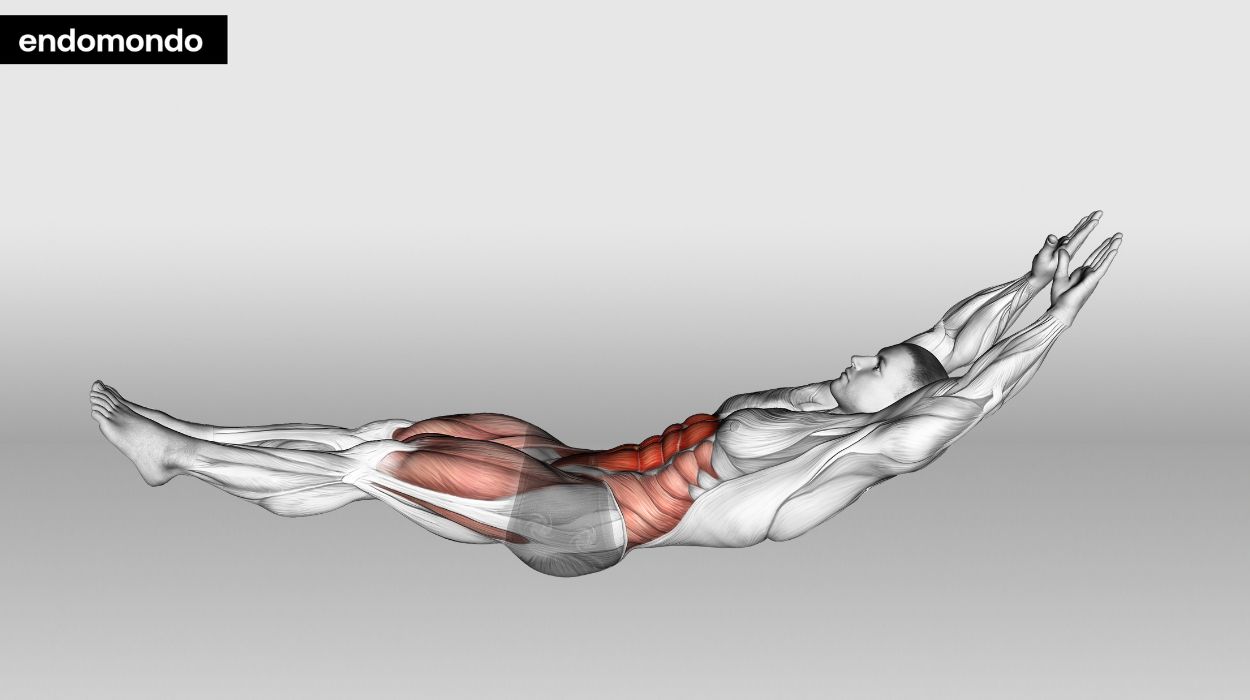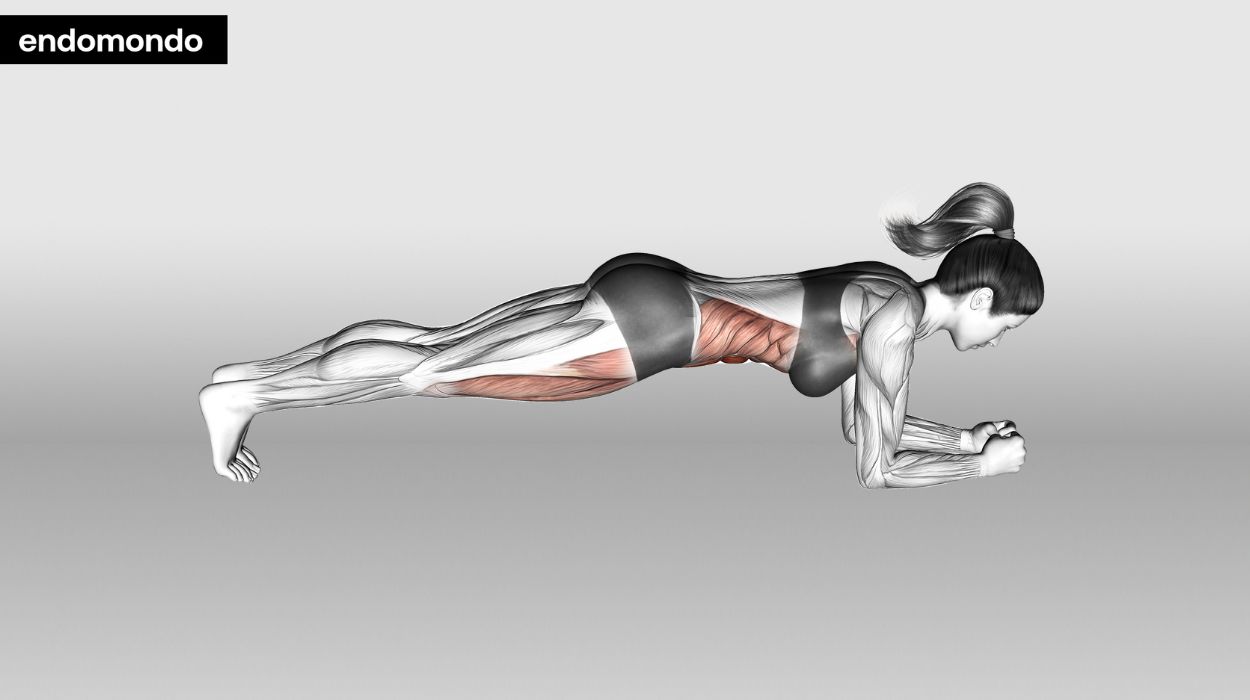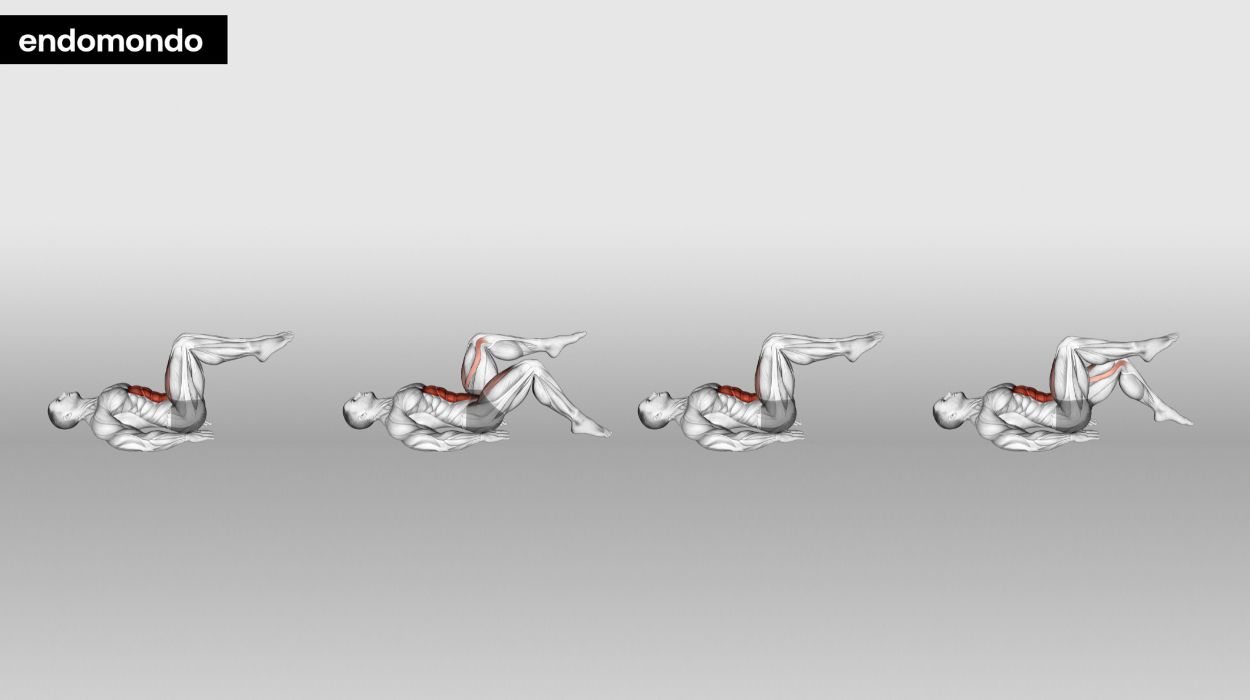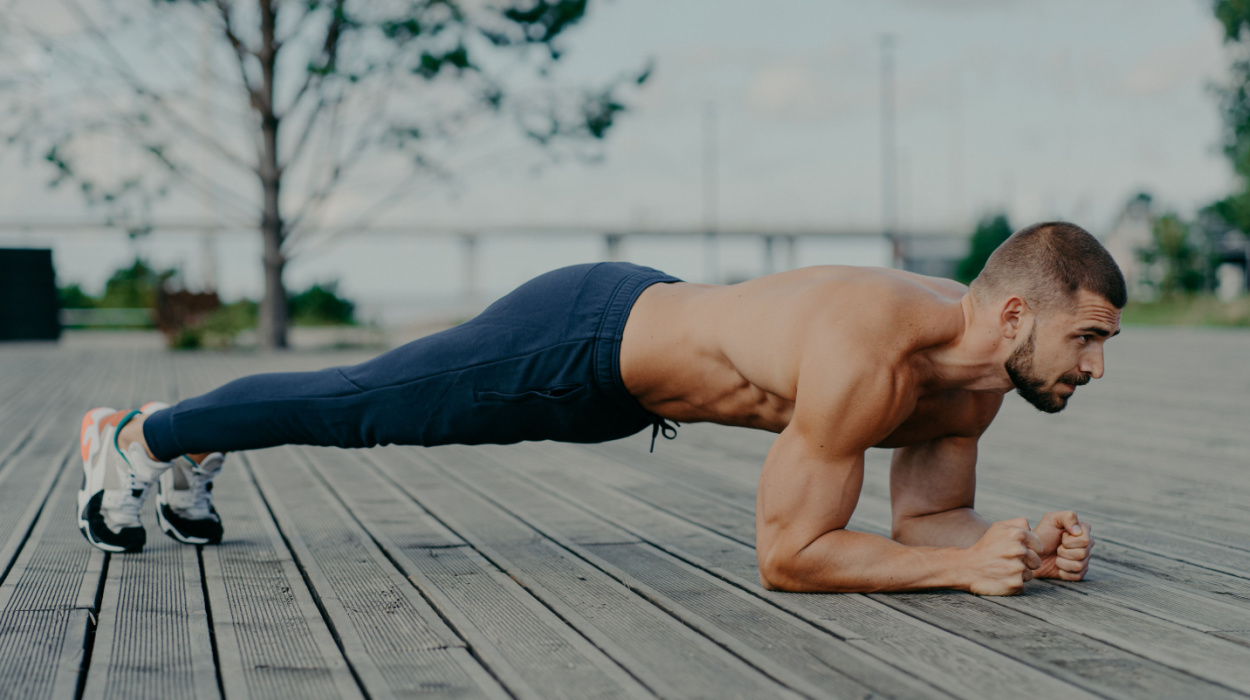
What is the musculus transverse abdominis? This muscle is the deepest part of the core and the abdominal wall – here are some of our favorite core workouts for the transversus abdominis and a couple of reasons for honing your strength in this part of the body vital for your fitness goals, especially in transverse abdominis exercises.
Best Exercises For Transverse Abdominis That Strengthen Your Core
Best Transverse Abdominis Exercises For Six Packs
The key to an effective transversus abdominis workout is the engagement of the core muscles. It’s not all about doing crunches, although those are highly effective when building muscle elsewhere in the core.
Activating the deepest abdominal muscle, the multifidus (surrounds the spinal column), and the transversus abdominis results in the muscle engagement and co-contraction required to strengthen these major muscle groups.
There are many ways to activate the abdominal wall, even through everyday activities and lifting movements. If you would like to target your core more aggressively, you can try the following transversus abdominis workouts and earn yourself the visible abs that you so rightfully deserve:
- Hollow Body Hold
- Planks
- Toe Taps
Before getting started, let’s walk through a quick exercise[1] designed to teach you how to sense intra-abdominal pressure: the abdominal draw-in maneuver (ADIM). To do this, lie on your back in the supine position. With your feet flat on the ground and your knees bent, draw the navel region into your body toward the lumbar spine.
You should be able to feel the difference between what you’re doing and the normal abdominal wall tension that you feel when these muscles are not activated. You should be able to feel this muscle group at work by touching the place right inside of your hip bones. Keep doing this while breathing steadily; with time, you’ll develop[2] your internal and external obliques through this starting position, and you’ll have a much easier time making all of these ab workouts and moves after the fact.
So, you know what they’re called and how to keep your core engaged. What’s the best way to do them all at home?
Hollow Body Hold
Hollow bodies are yoga moves – it’s also called locust pose and salabhasana in Sanskrit. The Hollow Body Hold is a fantastic exercise for targeting the transverse abdominis, the deepest layer of your core muscles, and an excellent way to build a strong foundation for other workouts and daily activities, promoting better balance and reducing the risk of lower back pain

How to do:
- Lie down on the ground, belly down.
- With your arms extended out in front of you and your legs straight back behind you,
- Slowly lift all of your limbs into the air with your neck erect and your head facing forward.
- Focus on breathing steadily and holding the contraction in your core muscles.
- Variations might have you stretching your arms back at your side and perhaps even continuing into a bow pose if you’re feeling it, grabbing your ankles with your hands to push more deeply into the stretch.
- Hold the position for the recommended time, and then gently lower your body back to the starting position.
Tips:
- Begin with shorter holds to perfect your form. Ensure your lower back remains flat on the ground, and gradually increase the duration as your core strength improves.
- Concentrate on engaging your transverse abdominis muscle by pulling your navel towards your spine. This deep core engagement enhances the effectiveness of the exercise.
Optimal Sets and Reps: three sets of 20-30 second holds.
Planks
Planks are the ultimate workout for core stability, strengthening the core muscles, trunk muscle coordination, and improved mobility. By maintaining a neutral spine and engaging the transverse abdominis, incorporating planks into your routine can lead to better support for your spine and pelvis and can be a key component in transverse abdominis exercises for a strong and stable core.

How to do:
- Start by positioning yourself face-down on the floor, supporting your upper body with your forearms and your lower body with your toes.
- Place your forearms parallel to each other, ensuring they are shoulder-width apart. Your elbows should be directly under your shoulders. Keep your body in a straight line from your head to your heels.
- Ensure your neck is in a neutral position, looking down at the floor to maintain alignment.
- Hold this position, keeping your core tight and breathing steadily.
- To complete the plank, lower yourself gently to the ground when you’re ready.
Tips:
- Engage your transverse abdominis by drawing your navel toward your spine and holding this position throughout the exercise.
- Start with holding the plank for 30 seconds and gradually progress to longer durations as your core strength improves.
- While holding the plank, breathe steadily and avoid holding your breath.
- Once you’ve mastered a regular plank, you can try advanced ab moves like side planks—take your left arm off of the ground and reach for the sky, balancing your body on top of your left leg and foot. For the next rep, do the same with your other arm and right leg, lifting the opposite arm toward the ceiling.
- Other plank moves include up-and-down planks, elbow planks, ice-climber planks, and many others, which can all pull double-duty as arm and leg exercises and moves targeting the ab muscles. Try them all and see what you like.
Optimal Sets and Reps: three sets of 30-60 seconds holds.
Toe Taps
Pilates fans are likely already familiar with this highly effective muscle-buster. By lifting your legs while keeping your lower back flat on the ground, this exercise engages the transverse abdominis, helping to tone and strengthen your core.

How to do:
- Lie on your back with your arms at your side.
- Lift your calves in the air so that your knees bend at a ninety-degree angle.
- Without dropping your leg muscles and while keeping your belly button engaged, slowly tap the ground with one big toe.
- Return to your starting position and do the same on the other side, moving gradually to activate each muscle deliberately.
Tips:
- Keep your transverse abdominis muscles activated by drawing your navel toward your spine throughout the exercise. This helps stabilize your core and protect your lower back.
- Focus on controlled and deliberate leg movements, tapping your toes lightly on the floor without using momentum.
- Gradually increase both sets and repetitions as your core strength improves, keep going for as many reps as you can; you should be able to feel the burn in your transversus abdominis muscle after only sixty seconds or so.
Optimal Sets and Reps: begin with two to three sets of 10-12 reps and progress to three to four sets of 15-20 reps on each leg.
What Are The Transverse Abdominal Muscles?
The transversus abdominis consists of the majority of the human core—the front and the side of the abdominal wall underneath the rectus abdominis which is closer to the surface of the skin. It’s sometimes called the corset muscle, as well, as it stretches around the abdominal cavity, protecting your internal organs and abdominal organs.
It’s part of a system of six major abdominal muscles; the grains of the muscle fiber run horizontally across the abdomen, which helps your musculoskeletal system support the trunk muscles and keep you sitting upright.
As the muscle runs horizontally, it arises from the lateral third of the inguinal ligament and associated iliac fascia, the thoracolumbar fascia, and the iliac crest. It receives its blood supply from the lower posterior intercostal and subcostal arteries, superior and inferior epigastric arteries, superficial and deep circumflex iliac arteries, and posterior lumbar arteries.
Despite its proximity, this deep abdominal muscle isn’t the ab muscle that you see from the outside. With that being said, however, it’s still vital to your fitness goals, as well as human locomotion in general.
What Does The Transversus Abdominis Do?

The structure of the spine and the surrounding muscles exists primarily to provide postural support for the entire body.
The transverse abdominis regulates our walking gait, can absorb shock, and stabilize our stance alongside the other muscles within this system.
Benefits Of Strengthening Your TrA With Transversus Abdominis Exercises

When the transverse abdominis and our other core muscles are weak transverse abdominis, all the abdominal muscles have a much more difficult time coordinating themselves and keeping you stable. Spine-health and back health are both intimately related to core strength.
If you’re able to develop the muscles behind your belly button, you’ll enjoy the following benefits, both short-term and long-term:
- Strengthening the transverse abdominis can help you both prevent[3] and alleviate lower back pain
- Your walking gait will become more regular, in form, and symmetrical
- In this vein, your athletic performance in other areas is also likely to improve significantly
- Your tummy will be flatter and tauter
These are, of course, only the transversus abdominis-specific improvements that you’re likely to experience. However, with every improvement that you make to your abdominal muscle system, you’ll also be subject to plenty of other perks aside from improved abdominal muscle stability, relief from back pain, and a leaner, meaner core.
There are so many reasons to devote time to sculpting this central abdominal muscle. Your other abdominal muscles will thank you for your time. We recommend celebrating your success with an appropriately nourishing post-workout recovery meal to lock your gains in.
Final Thought
When your core is in good working order, the rest of your fitness profile will fall into place naturally. Ask any physical therapist – a strong transverse abdominis plays a vital role in the movement of the rectus abdominis and the rest of your abdominal muscles and the ability of the entire body to do its thing daily.
It all starts with the internal abdominal oblique muscle. Once you get those muscle fibers working, your results are guaranteed.
Resources
- Madokoro, S., Yokogawa, M. and Miaki, H. (2020). Effect of the Abdominal Draw-In Maneuver and Bracing on Abdominal Muscle Thickness and the Associated Subjective Difficulty in Healthy Individuals. Healthcare, [online] 8(4), p.496. Available at: https://www.ncbi.nlm.nih.gov/labs/pmc/articles/PMC7712241/.
- Koh, H.-W., Cho, S.-H. and Kim, C.-Y. (2014). Comparison of the Effects of Hollowing and Bracing Exercises on Cross-sectional Areas of Abdominal Muscles in Middle-aged Women. Journal of Physical Therapy Science, [online] 26(2), pp.295–299. Available at: https://www.ncbi.nlm.nih.gov/labs/pmc/articles/PMC3944309/.
- Lynders, C. (2019). The Critical Role of Development of the Transversus Abdominis in the Prevention and Treatment of Low Back Pain. HSS Journal ®, [online] 15(3), pp.214–220. Available at: https://www.ncbi.nlm.nih.gov/labs/pmc/articles/PMC6778169/.




